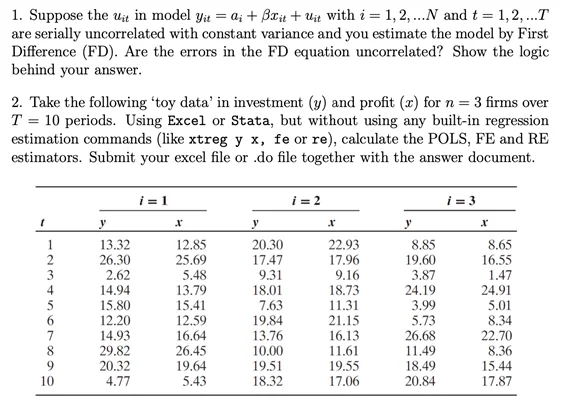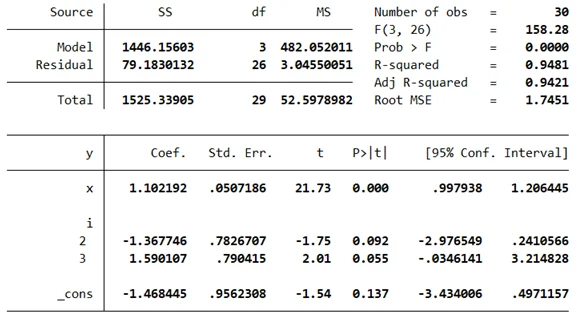This comprehensive analysis delves into the profound influence of media on teen pregnancy rates in the United States. Leveraging the power of Stata, a robust statistical software, this study explores key concepts and methodologies, shedding light on the impact of media, specifically the television program '16 and Pregnant.' Drawing inspiration from the insightful research by Melissa S. Kearney and Phillip B. Levine, published in the American Economic Review, 2015, the study provides a detailed understanding of the statistical techniques employed in assessing the association between media exposure and teen childbearing. Explore the intricate world of media's influence on adolescent pregnancy rates in the USA.
Problem Description
In this STATA assignment solution, we address various aspects related to the impact of media on teen pregnancy in the USA using the statistical software Stata. We reference a paper titled 'Media Influences on Social Outcomes: The Impact of MTV’s “16 and Pregnant” on Teen Childbearing' by Melissa S. Kearney and Phillip B. Levine (published in the American Economic Review, 2015) to illustrate key concepts and methodologies. The focus of this assignment lies in analyzing the effects of a specific media program on teen childbearing rates and understanding the statistical techniques used in the analysis.
Sample Solution:

Serially Uncorrelated Errors: The errors in the first-differences estimators are uncorrelated. This conclusion is based on the fact that serially uncorrelated errors (cov(u_it, u_it-1) = 0) imply uncorrelated first-differences (Δy_t = βΔx_it + v_it, where v_it = u_it - u_it-1). Therefore, the errors in the first-differences equation are uncorrelated.
POLS and RE Results:It is essential to note that both the Pooled Ordinary Least Squares (POLS) and Random Effects (RE) models yield identical results.

Analysis of 'Media Influences on Social Outcomes':To explain the structure and variation in the dataset used by Kearney and Levine, consider the purpose of their study. They aim to evaluate the impact of the TV show '16 and Pregnant' on teen childbearing rates.
It's worth noting that including the terms Rate16P_j and post_t in the regression would introduce multicollinearity with the fixed effects δ_js and θ_t. Stata would automatically drop these variables due to this issue.
Interpreting the common trend assumptions in the absence of a control group is challenging. The absence of a control group makes it difficult to attribute changes in the coefficient of the best fitting line solely to the TV show. A control group could have strengthened the argument by showing similar trends in the pre-treatment period, unrelated to '16 and Pregnant.'
Random Effect vs. Fixed Effect Models:The authors choose Fixed Effects over Random Effects in their panel data model to account for unobservable characteristics related to individual units of observation, which can bias the estimator if not considered.
To determine the model that fits best, the authors compare different models with varying specifications. The inclusion of the 'conflict duration' variable in linear and cubic forms is examined. Model 3, which excludes the duration variable, is favored due to its suitability for the estimation.
The paper's methodology is commendable for its simplicity and the inclusion of numerous control variables. However, it relies on a strong assumption of the exogeneity of OLS regressors, which may not hold in many cases. It assumes that all endogeneity is captured by controls and fixed effects, neglecting omitted variable biases. Alternative strategies such as Instrumental Variables (IV) may offer more robust results by addressing endogeneity concerns.
In summary, the assignment covers critical aspects of the impact of media on teen pregnancy in the USA, with a focus on the statistical tools and techniques employed. It references a relevant academic paper and provides insights into the methodologies used in the research.
Similar Samples
Explore a wide range of exemplary assignments in our sample section. Gain valuable insights into the depth and quality of our statistical solutions. Each sample is meticulously crafted to showcase proficiency and clarity in statistical analysis. Experience the excellence awaiting you in the realm of statistical assistance.
Statistics
Statistics
Statistics
Statistics
Statistics
Statistics
Statistics
Statistics
Statistics
Statistics
Statistics
Statistics
Statistics
Statistics
Statistics
Statistics
Statistics
Statistics
Statistics
Statistics
